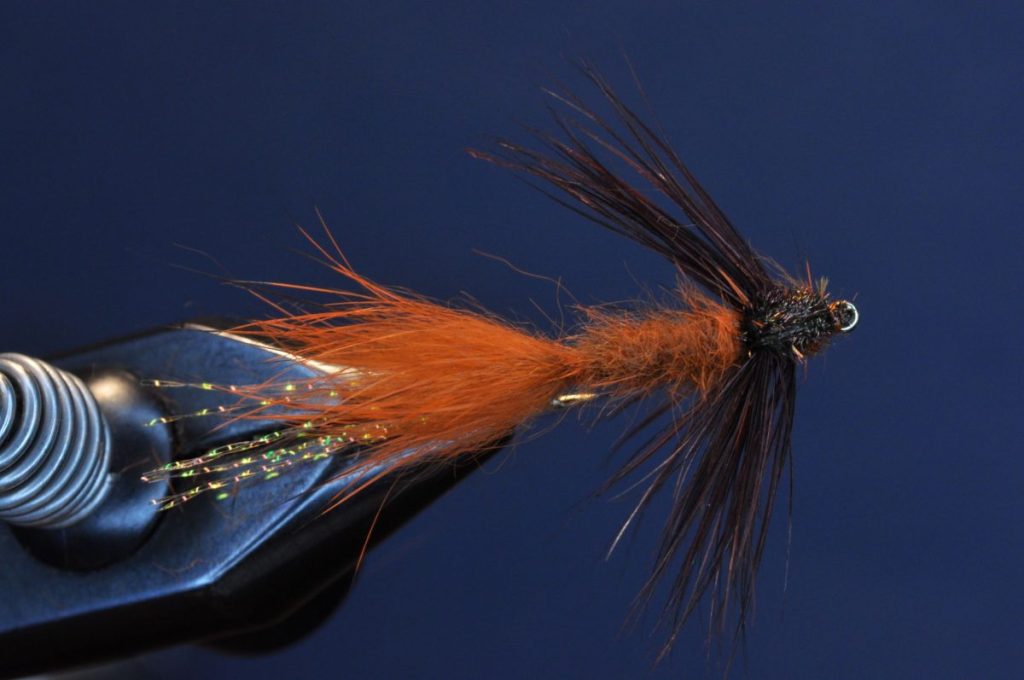
Looking for something else?
Try one of these!
Clouser’s Swimming Nymph Step-by-Step:
While researching patterns ahead of my inaugural foray into carp on the fly, it was evident the majority of patterns were designed on a similar premise: create a fly on a short, stout hook weighted with bead chain or lead eyes that would sit tail/hook up in the sediment. Given the common carp’s reputation as bottom feeders, it was easy to see the logic in this, and I eagerly jotted notes in preparation of tying a series of flies that fit this mold.
As I continued to read, however, a single exception to this rule continued to pop up in list after list: Bob Clouser‘s Swimming Nymph.
Originally designed for targeting smallmouth on Clouser’s home water, the Susquehanna River in Pennsylvania, the pattern allows for an active retrieve in contrast to the majority of “sit and wait” carp patterns fitting the description above. In spite of this, or rather due to this, it has proven an effective mimic of a variety of carp favorites (crayfish and dragonfly nymphs among them). And, as a result, the pattern has quickly risen among the ranks of “Go To” flies for the carp fishing community.
| Materials: | ||
|---|---|---|
 Tiemco 200R (Size 8-10) Tiemco 200R (Size 8-10) |  70 Denier (Orange or Rust) 70 Denier (Orange or Rust) |  Rabbit Strip/Flash (Crawfish/Gold) Rabbit Strip/Flash (Crawfish/Gold) |
 Dubbing (Rust or Crawfish) Dubbing (Rust or Crawfish) |  Dubbing (Rust or Crawfish) Dubbing (Rust or Crawfish) |  Peacock Herl Peacock Herl |
 Hen Hackle (Crawfish or Brown) Hen Hackle (Crawfish or Brown) |  0.20″ Diameter Lead-free Wire 0.20″ Diameter Lead-free Wire |
Disclosure: This post contains affiliate links. A small commission may be paid for purchases made through these links.
Clouser’s Swimming Nymph Step-by-Step Tying Instructions:
(Mobile Viewers: Click images to enlarge)
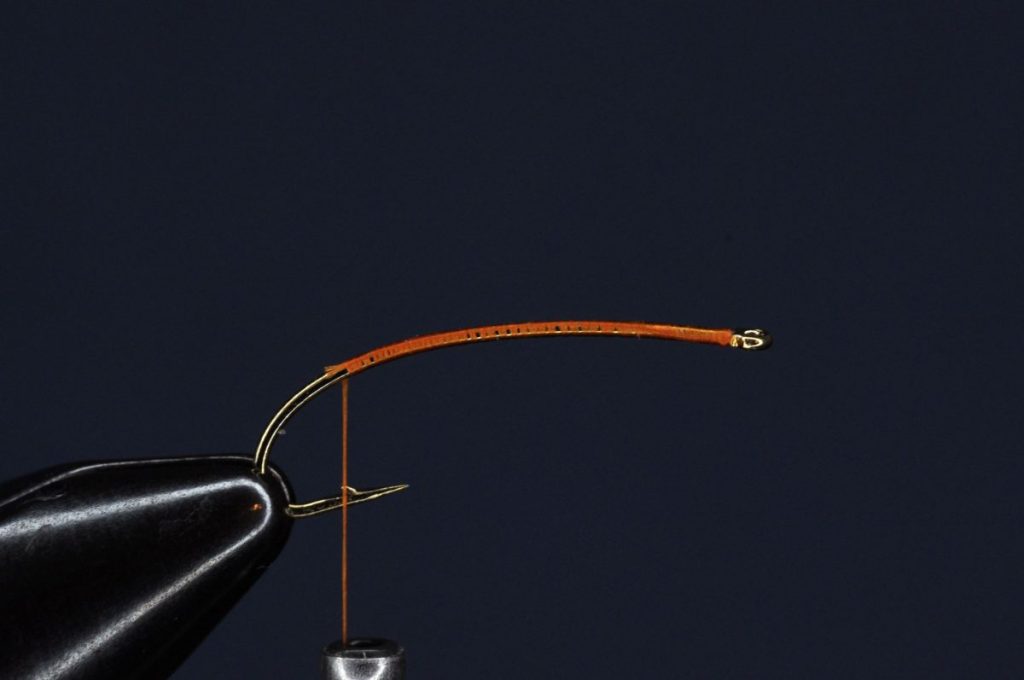
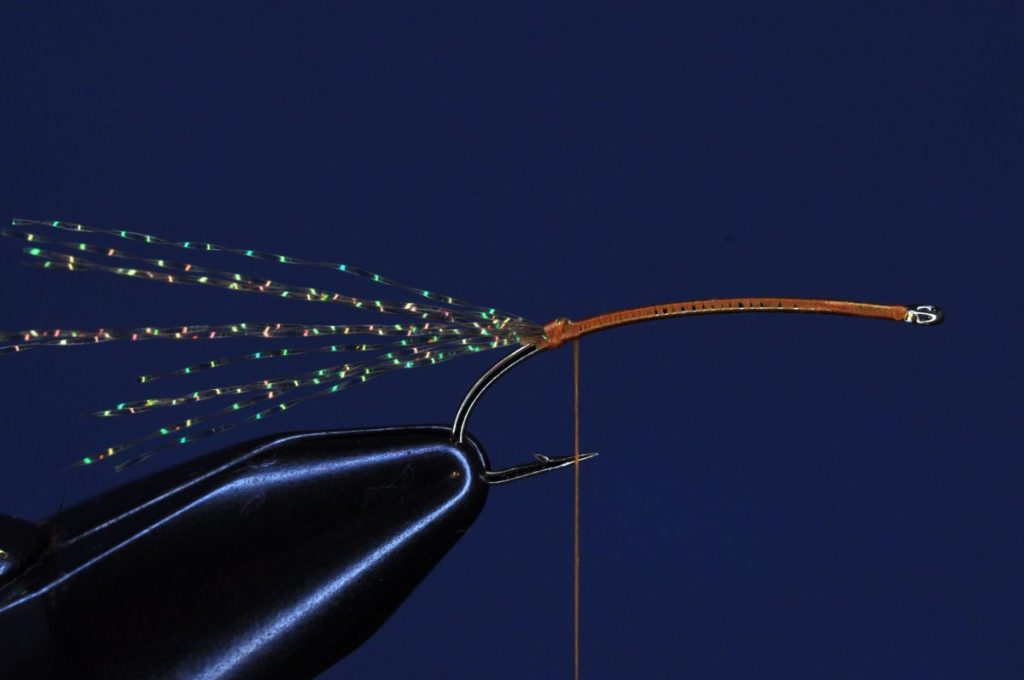

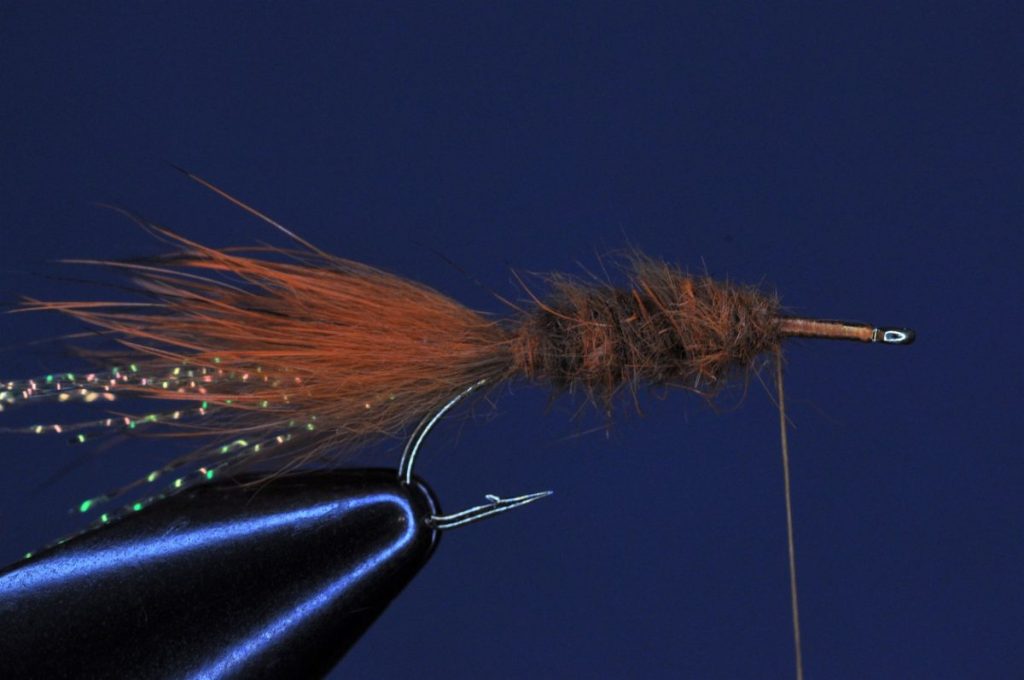
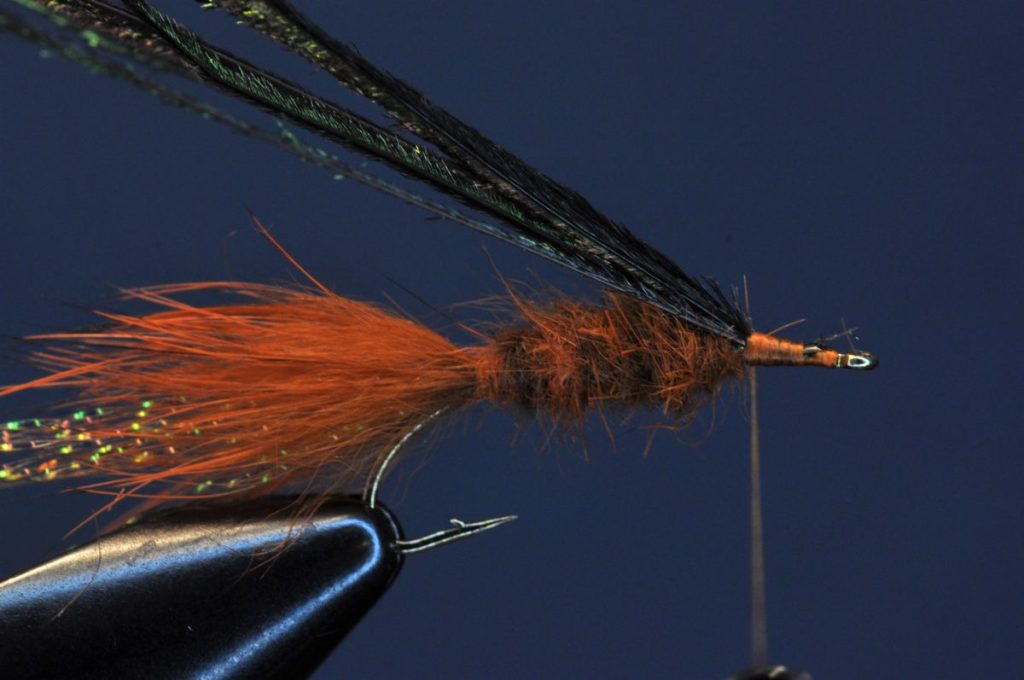
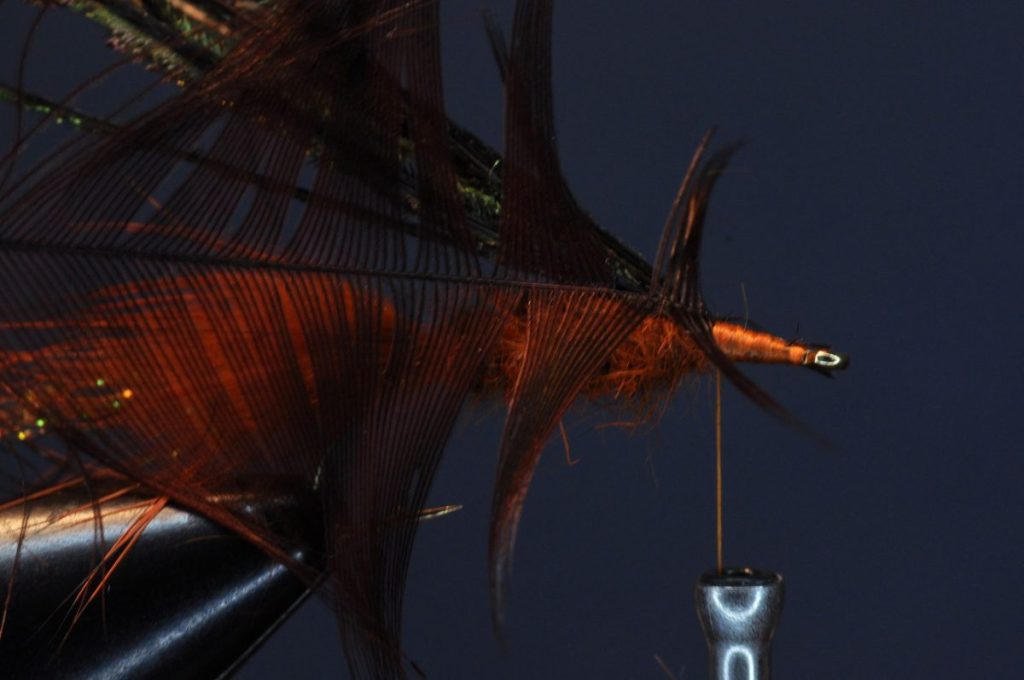
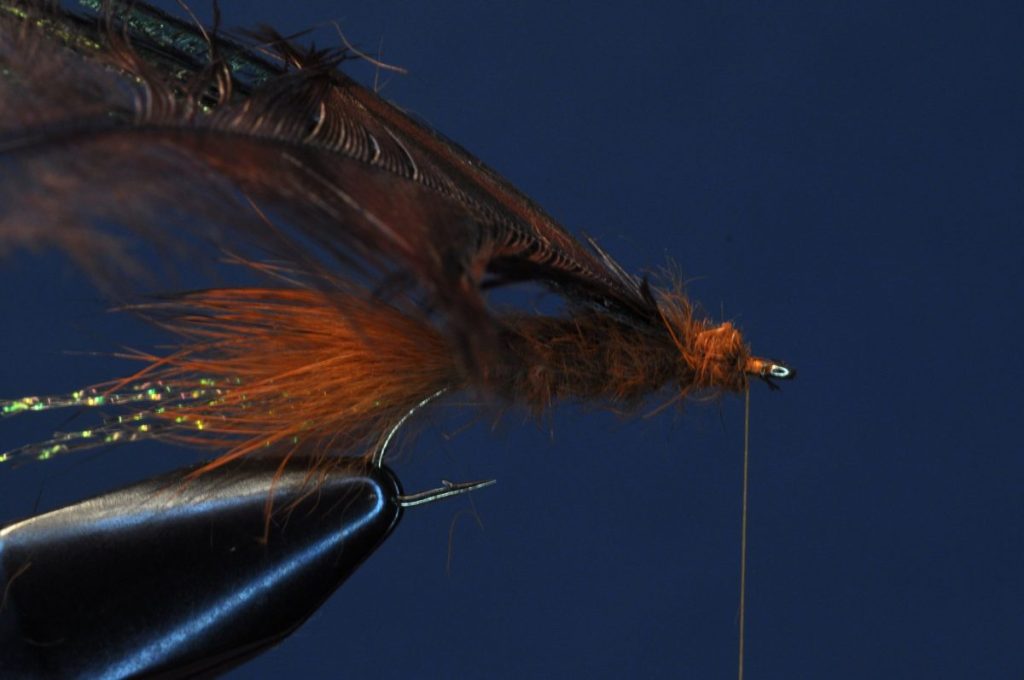
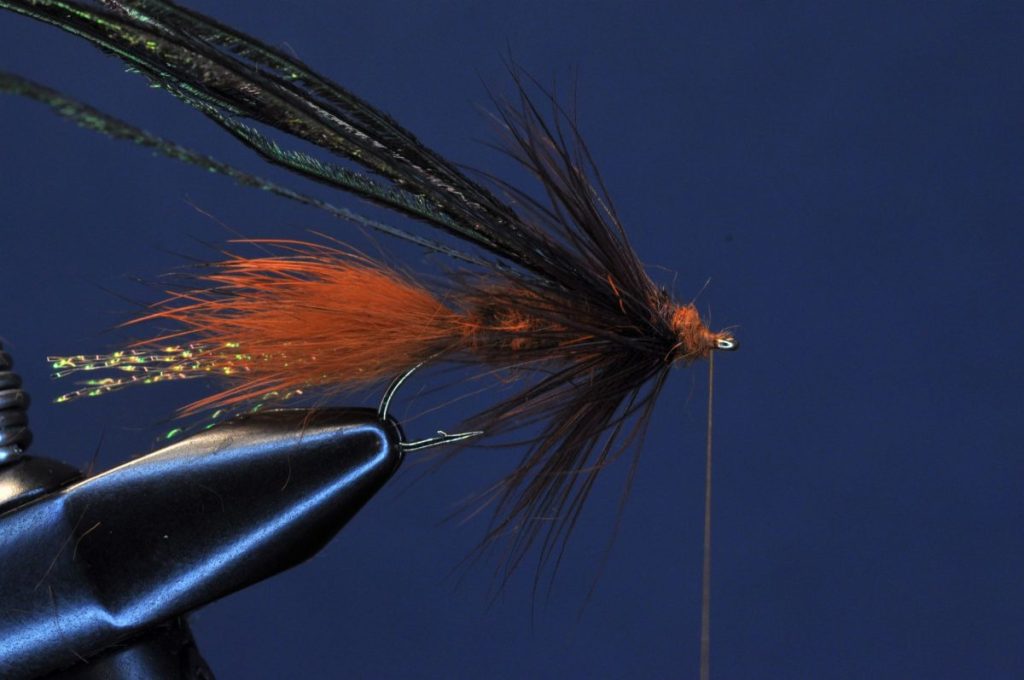
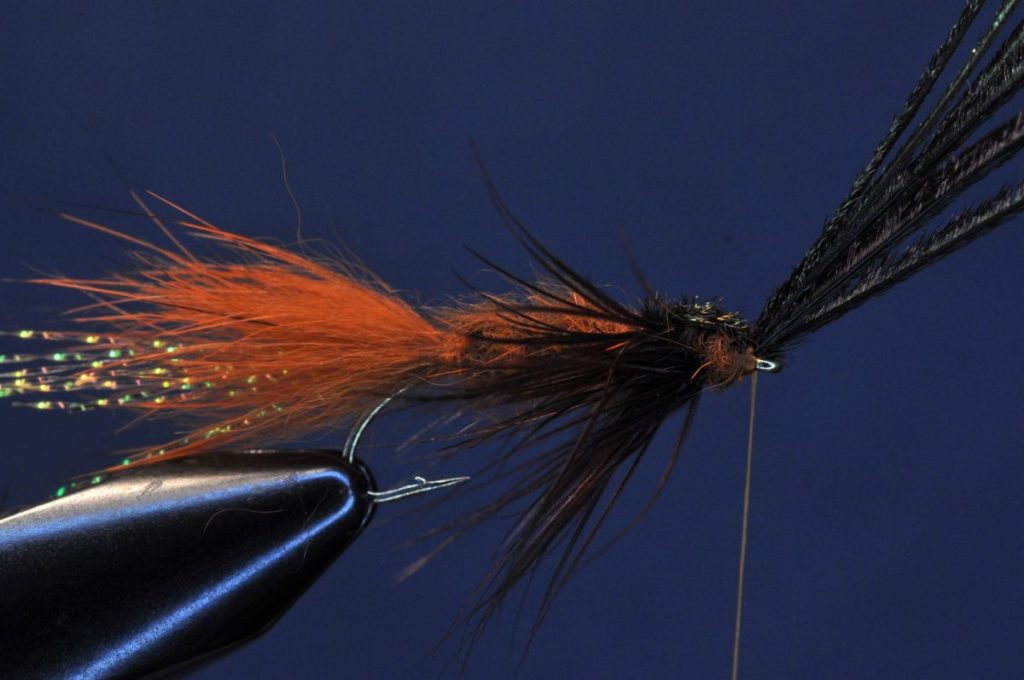

Tips and Tricks
- Weight is Optional – As tied by Clouser, this pattern includes a core of lead-free wire wraps beneath the abdomen and thorax. This is likely a necessity when fishing moving water. However, consider tying a few without the lead-free core if fishing stillwater. While the fly may not sink immediately if the tail is not saturated, the slower sink-rate once it does will come in handy when fishing over shallow, weedy flats.
- Color selection – Tied as shown (Rust/Orange), the fly is an excellent crayfish mimic. If damsel, dragonfly or other large nymphs are on the menu consider experimenting with olive, brown or black variations of this fly.
Proof of Concept (updated 04-21-2021)
While this fly originally proved its worth on my inaugural carp trip in December of 2020, a straightened hook as I attempted to pull a large carp through dense weeds, prevented photographic proof of concept. During the months since, it has time and again continued to prove its worth. However, mine as an angler has been called into question as each hook up has ended in a popped tippet or pulled hook.
It was only four months later, in mid-April of 2021, that I was finally able to provide photographic evidence of this patterns prowess.
On a day where sight fishing opportunities were largely hindered by water rendered the color and consistency of chocolate milk by recent rains, the pattern proved itself time and again. Along with the 27″ common carp featured on the right, the pattern produced two gar (to 32″) as well as a 30+” grass carp. The latter of which I sadly was unable to photograph.
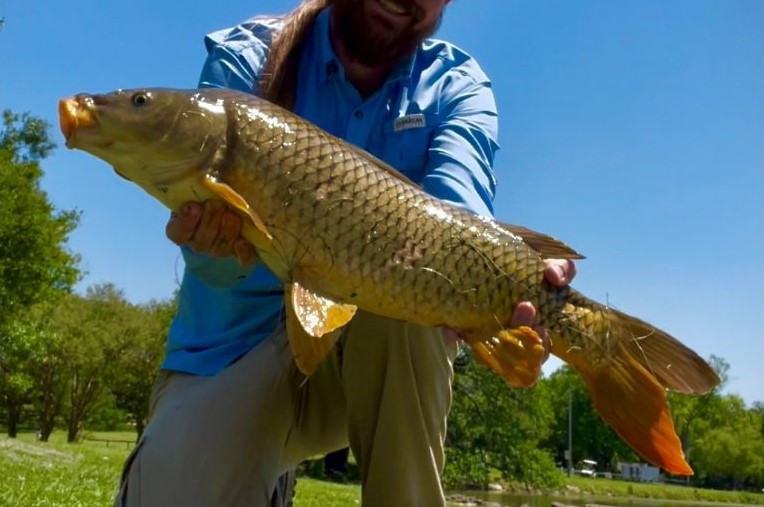
Species Caught on Clouser’s Swimming Nymph to Date:
- Common Carp
- Largemouth Bass
- Spotted Gar
- Grass Carp
- Bluegill
- Longear Sunfish
Tight Lines!
-Chris
